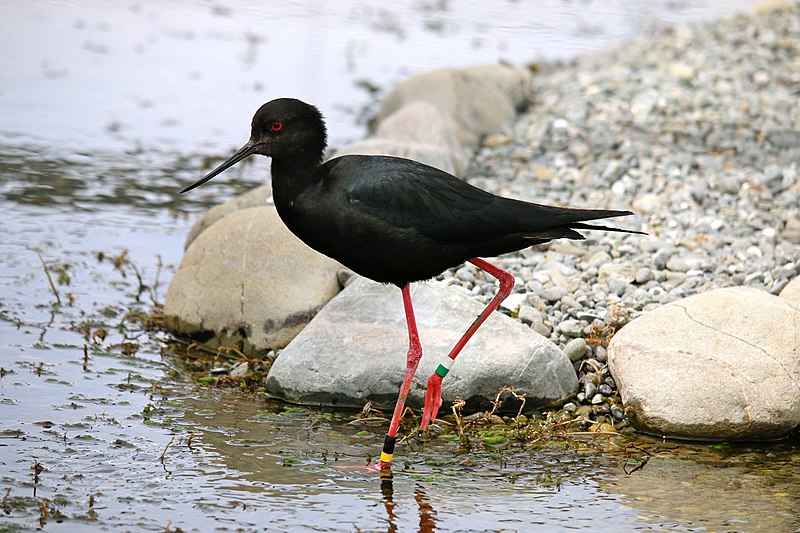New Zealand’s black stilt wading bird, also known as the kakī by the indigenous population, only has 200 individuals left in the wild, and has been labeled as critically endangered by the country’s Department of Conservation (DOC).
Through what is being called the Kakī Recovery Programme, however, these endangered birds may have a new chance at thriving.
The wild population for the black stilt has increased by 30% over the last year thanks to the recovery program which involves breeding the birds in captivity and then releasing them into the wild.
The recovery program has been ongoing for many years, but the key seemed to be an “expansion of predator control” in the bird’s habitat in the wild. Since these measures were taken, the wild numbers of kakī have exploded.
As reported in Mongabay:
“The kakī once had an extensive range across both the North and South islands of New Zealand. But introduced predators, such as stoats, ferrets, rats and even cats, decimated the wild populations of the bird. By 1981, there were a mere 23 adults and four breeding pairs living in a small part of the South Island.
“‘Kakī are vulnerable to predation at all stages of life, with close to 0% of chicks surviving to adulthood in the wild,’ Brown said [of New Zealand’s DOC]. ‘Kakī are also vulnerable when they are nesting and rearing chicks. Both male and female kakī will exhibit ‘broken wing’ behaviour to attempt to draw predators away from their nests, which can lead to the adults also succumbing to predation.’”
In addition to taking care of parent birds for breeding in captivity, the program also employs officers who collect eggs from the wild to ensure the chicks survive to adulthood. To reduce stress on parent black stilts, the officers will usually replace the wild eggs taken with artificial eggs.
The kakī, like many other native species, had no defense against certain predators introduced by European settlers, mainly mammals. As such, the bird quickly was decimated by the new predators.
It is hoped that these conservation efforts will continue to see success and the black stilt will be a fixture of New Zealand wildlife for centuries to come.
To read the entire article in Mongabay click here.
